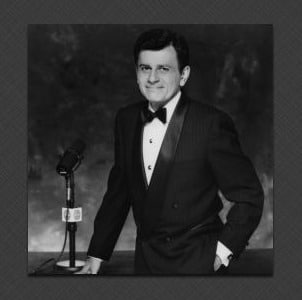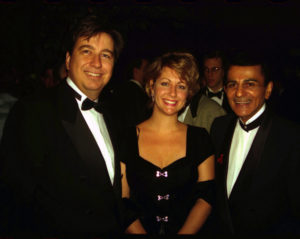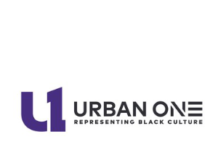
(By Walter M Sterling aka Walter Sabo) “Make it sound live.” There is another approach to voice tracking: Produce spectacular. Voice tracking is often viewed as symptomatic of the sad devolution of radio. It could be perceived as a creative gift. Voice tracking gives talent time to plan, produce and write. Instead of recording throw away breaks, imagine the impact if those breaks were produced to be clever, memorable.
When “American Top 40” was first aired, it was a good show and stations were happy to air it. Listening to Casey Kasem’s work today, heard on many iHeart stations and on SiriusXM, one realizes how truly great he was at counting’ em down. Every break perfect, every phrase precision.
Casey could not have delivered that show live, he voice tracked it. For years I thought that it took him about 45 minutes to voice track his four hour countdown. He was so slick and smooth, it must have been a snap for him to build those breaks and then head out of the studio for a fancy, Hollywood dinner.
The American Top 40 company, Watermark, built by Casey and Tom Rounds was bought by ABC. His show was under the auspices of the Radio network. I was a suit at the network and witnessed how the show was created. AND I WAS STUNNED.
Casey and his team including Don Bustany, Tom Rounds and Ron Jacobs spent at least 10 hours building the show. 10 hours. OR some days, Casey would work for 10 hours, walk out of the studio and say, “Well tomorrow we will do the top 15 songs…” American Top 40 often took more than one day to complete. A four hour show. When you listen to the program now, you will in fact hear timeless art. Every break perfect.
Kraig Kitchin who had the privilege of working with Casey when the show went to Premiere, was also impressed with how long it took to make American Top 40. Thirty years into the show, Mr. Kasem demanded and got a perfect product every week. He was able to do that because of voice tracking.
Most stations have robust production libraries with mood beds, sound effects, staging. Digital equipment makes any effect you want and any voice you can imagine. Rather than saving those production capabilities for the local gutter cleaner spot, show them off in the breaks. Paint the sound mural. Voice tracking makes it possible to create transcendent moments.
 Perhaps the voice tracking challenge should not be, how fast can we get it done. But rather, how many takes is required to make it perfect?
Perhaps the voice tracking challenge should not be, how fast can we get it done. But rather, how many takes is required to make it perfect?
Walter M Sterling hosts a Westwood One weekly entertainment show called Sterling on Sunday. It airs Sundays at 10 PM [email protected] www.waltermsterling.com






Likely, most of us, at one time or other, were working for “Wally-wages” when we first stepped into the booth. But, we were also dedicated and engaged in becoming better at the craft, and becoming more deserving of making some bucks in the bigs.
Voice trackers, however, are doomed souls. Redemption is being withheld. They aren’t going anywhere, except another line of work – if they have any gumption and imagination.
Gee, Ronald Robinson’s comment, “There is no room for someone who is making “Wally-wages” to spend more time than is absolutely necessary to crank out the drivel and gibberish” makes me wonder why I even bothered to open the mic when I began in this business 50 years ago. After all, I was making only minimum wage, so I guess I shouldn’t have cared what was going on the air.
It doesn’t matter if you are on the air live or voice tracking, regardless of what you are being paid, if your mission is to just get it done and move on, it’s time to rethink your profession.
Walt is spot on.
Although TheBigA alludes to any decision to avoid voice tracking as a sin against the gods of technology, effective radio still requires the input of actual. talented, skilled and “live” personalities and well-crafted, more effective recorded commercials.
Digital production techniques have made for more convenience and a tragic dissipation of personal participation from real-life, real-time personalities.
A terrific 4-hour show requires more than any 20 minutes in production can provide.
“Voice tracking is often viewed as symptomatic of the sad devolution of radio. It could be perceived as a creative gift.”
Yeah. Tell that to everyone who loses their job to a voice track. Talk about localism and then get someone 1000 miles away to do your afternoon drive, and put Westwood One on from 9PM until 5AM.
I’m sorry, but I just don’t see that as a formula for success.
The original voice tracker was Bing Crosby during the golden age of radio. Back then, he had to do two shows: One for the east coast, one for the west. He asked why couldn’t they just record the first show and play it back for the west? At the time, the only way was to record on a transcription disc. That’s what they did. Then Bing became an investor in a small California company that made tape recorders. That company was Ampex. It helped make Bing very rich. Technology exists for a reason. To ignore its existence is living in denial.
Voice tracking has one, and only only, outcome: Cutting the costs of programming “live” talent to small fractions.
There is no room for someone who is making “Wally-wages” to spend more time than is absolutely necessary to crank out the drivel and gibberish.
Anyone making the case otherwise might be practicing their “alternative fact” building skills for some other, more sinister reasons.